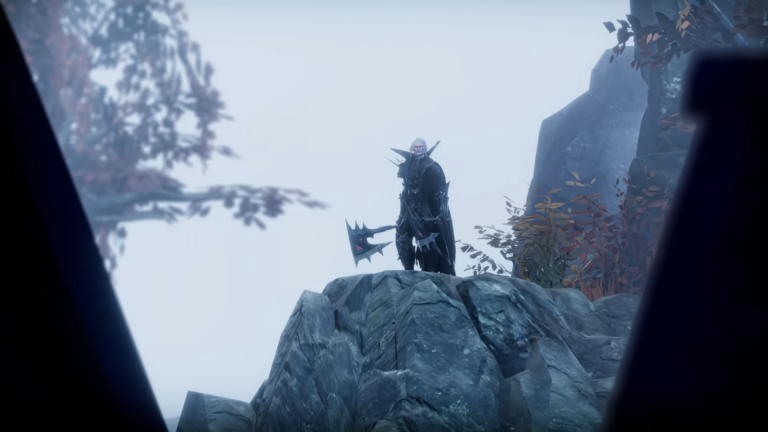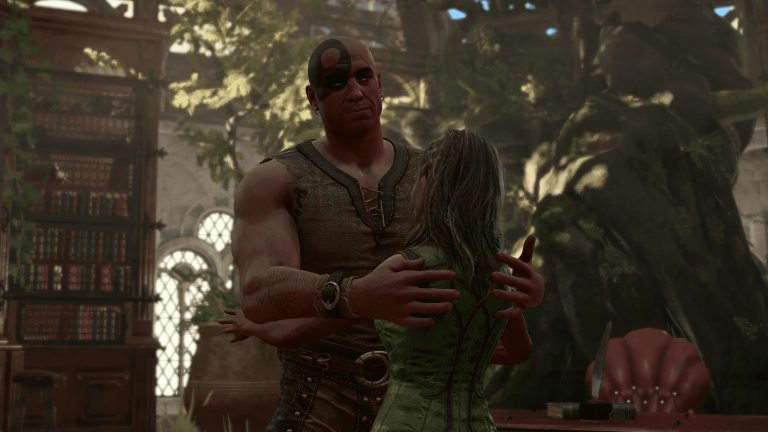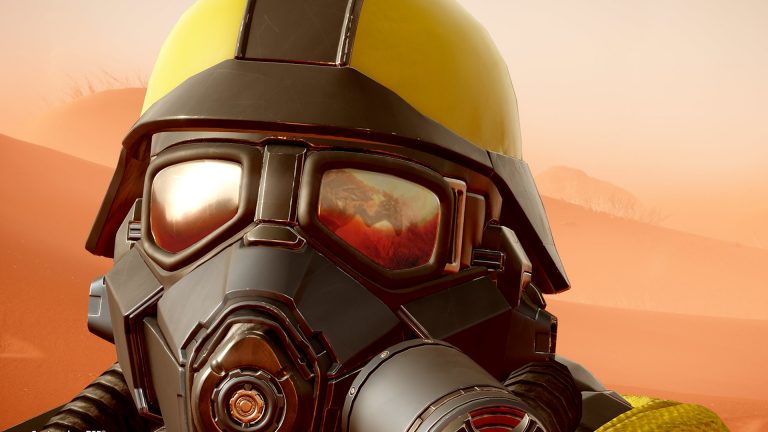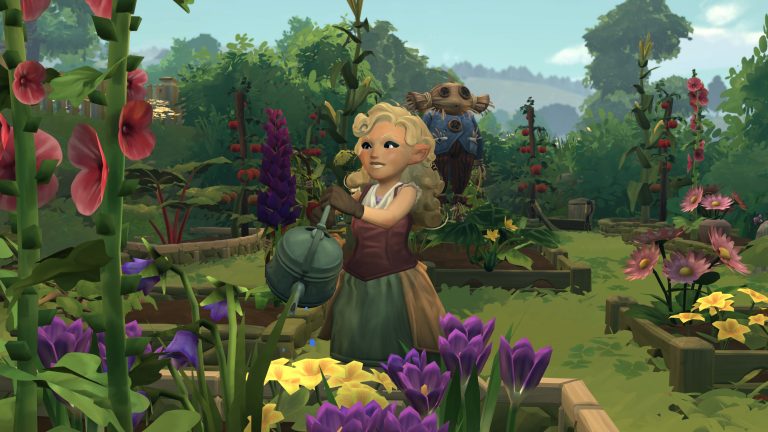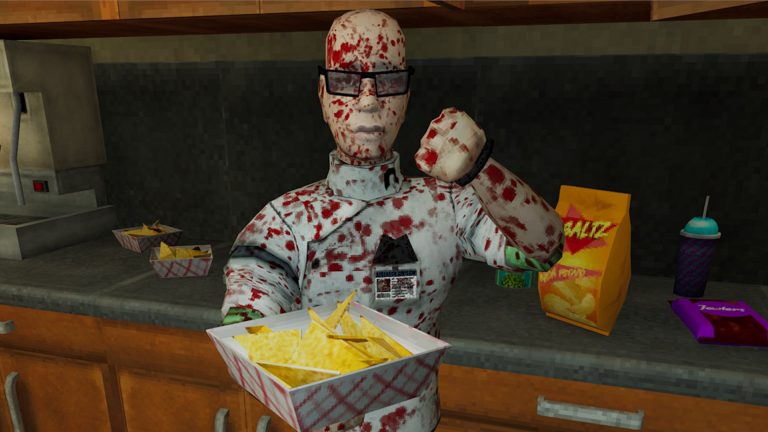Marooned alone on a mysterious Viking continent, I’ve managed to survive long enough to build a few things: a campfire for warmth, a shelter for rest, and a rainwater collector to quench my thirst. Most importantly I’ve constructed an altar called The Eye of Odin, a stone orb that projects a glowing beam into the sky to summon a friendly Viking NPC to my location. After long days and nights of foraging, crafting, and fighting off monsters on my own, I won’t be alone anymore.
Eventually a shirtless dude named Birger arrives at my meager camp and I rush over excitedly to greet him. “I feel well hydrated,” he says bluntly after slurping up my rainwater, and then immediately begins complaining that he has nowhere to sleep. Okay, that’s not quite the hearty and wholesome Viking welcome I was expecting, but who cares? The important thing is that I now have someone to chop down all the trees I was chopping down myself.
At a quick glance Viking survival game Aska, which enters early access on Steam on June 20, appears to be a Valheim-alike, but it’s got a lot of big differences. At its heart is a ton of settlement building and management systems, and while you can play with a handful of friends in co-op, most of the Vikings in your village will be NPCs. They can do chores for you like gather wood and stone, collect food, build structures, fight monsters, and even form production chains to mass-craft items.
You can also occasionally devour their souls. More on that in a minute.
Town Haul
The building system in Aska is blueprint-based, not freeform, so structures are placed as glowing outlines and you fill them with materials like logs and sticks and rope, then use a hammer to whack it all together. It’s a time-consuming process, and slowing things down even more are standard survival systems: you need to gather food, drink water and stay warm.
But once you’ve lured an NPC to your village they’ll automatically contribute to the building of any incomplete structure, provided they can find the materials nearby. You can also assign them to specific workstations. The well-hydrated Birger was already assigned to felling trees, so when my second NPC arrived, a worker named Tove (she was also well-hydrated, and told me so), I assigned her to my food station. She ran off and started gathering berries and onions to deposit in baskets. Just like that, my job as Viking mayor became much easier. I especially love plopping down a new blueprint and watching my workers gather sticks and carry logs around to build my stuff for me.
(Image credit: Thunderful Publishing)
The best moment in the early hours of Aska by far was when I built a workshop. There I can do more than just tell my citizens to gather stuff, I can tell them to craft stuff. I was constantly having to use plant fiber to make rope (or use bark to make plant fiber to then make rope), which is needed in every construction project, including tool-making.
Note to self: invent bows and arrows.
But at my workshop I could assign one of my Vikings to make rope for me. It’s tremendously satisfying to watch Birger run out to collect fiber, then see my third villager, Skarde (hydration level: well) stand at the workshop and turn it into rope for me. After cursing rope for the first few hours, I now have so much I’ll never have to think about crafting it myself.
If you’re looking for similarities between Aska and Valheim, here’s one: there are raids on your base. The first happened when I’d built a food gathering station, and creatures named smolkrs (which looked a bit like giant rats with ram horns) smelled all the snacks Tove had gathered and came rushing into the village to snarfle it down. Smolkrs are not as simple-minded as most videogame enemies, either: they flee when you attack them, and since my Viking and the smolkrs run at roughly the same speed, there was a long and less-than productive chase every time they came near my food pit. Note to self: invent bows and arrows at some point, and assign Skarde to craft them.
(Image credit: Thunderful Publishing)
The next raid was more personal: wights attacked my village in the dead of night, surrounded my rainwater collector, and punched the crap out of it. How dare they! This is the most well-hydrated Viking tribe in history. Drinking water is literally the sole topic of conversation around here. Our response was swift and brutal and now the rainwater collector is surrounded by dead wights—which I can’t carve up because I haven’t invented knife technology yet either.
Soul food
With my workers carrying the weight of endless settlement chores, I’m free to experiment with new projects. Magic projects. Using the resources my little helpers generate, I build a second altar, and use it to craft a raven potion. I have no idea what that is, so I immediately chug it, and poof, I turn into a raven.
I take off and fly as high into the air as I can. With all the work and supervision my colony needs, I’ve had barely any time to explore the world of Aska, but now that I’m a raven I’m gonna check out this entire world and see what I can—whoops, scratch that idea. After about 30 seconds of flight I turn back into human form and plummet back to the ground. Yup, the fall killed me.
(Image credit: Thunderful Publishing)
I can respawn, but intriguingly I also have the option to become a ghost. I choose to do that, because who wouldn’t want to be a ghost? As I begin to run around the village as an apparition, a prompt tells me to “harvest a villager soul to regain my humanity before it’s too late.” A three minute timer begins.
I hate to drain the lifeforce of one of my loyal villagers, except I kind of don’t because that’s a pretty metal thing to do.
Look, I hate to drain the lifeforce of one of my loyal villagers, except I kind of don’t because that’s a pretty metal thing to do. I come across Tove sleeping in her shelter, and since we have an abundance of food I decide my colony can afford to lose her. “I don’t want to die,” she says as I consume her soul, black smoke swirling around us.
It’s grim, but at least it was a conversation about something other than hydration levels. On the plus side I can take the near pristine tools off her corpse to replace my nearly ruined ones. On the plus side for me, I mean. There’s not really a plus side for Tove, except she’s escaped a life of monotonous berry-gathering and water-based gossip.
(Image credit: Thunderful Publishing)
While I had a pretty good time with the first few hours of Aska, there are a few things I don’t love about it. Resources like sticks and stones lying in the dense foliage are really difficult to spot, even if you’re standing almost on top of them. You can scan the area around you by tapping the Z key which highlights nearby resources and makes the foliage shrink so you can get a better view, but this scanning ability only lasts a few seconds. I spend most of my time in Aska running through the woods looking for resources, and a lot of that time is spent tapping the Z key to trigger the scan. I’d prefer a resource highlight toggle rather than it be tied to an ability I have to activate every few seconds.
I’m also not sure how attached I’ll really become to my villagers. It’s fun watching them work, but I can’t say I feel a lot of fondness for them. If all they want to talk about is their hydration levels and lack of sleeping bags, I probably won’t care all that much about their well-being. Just ask Tove.



